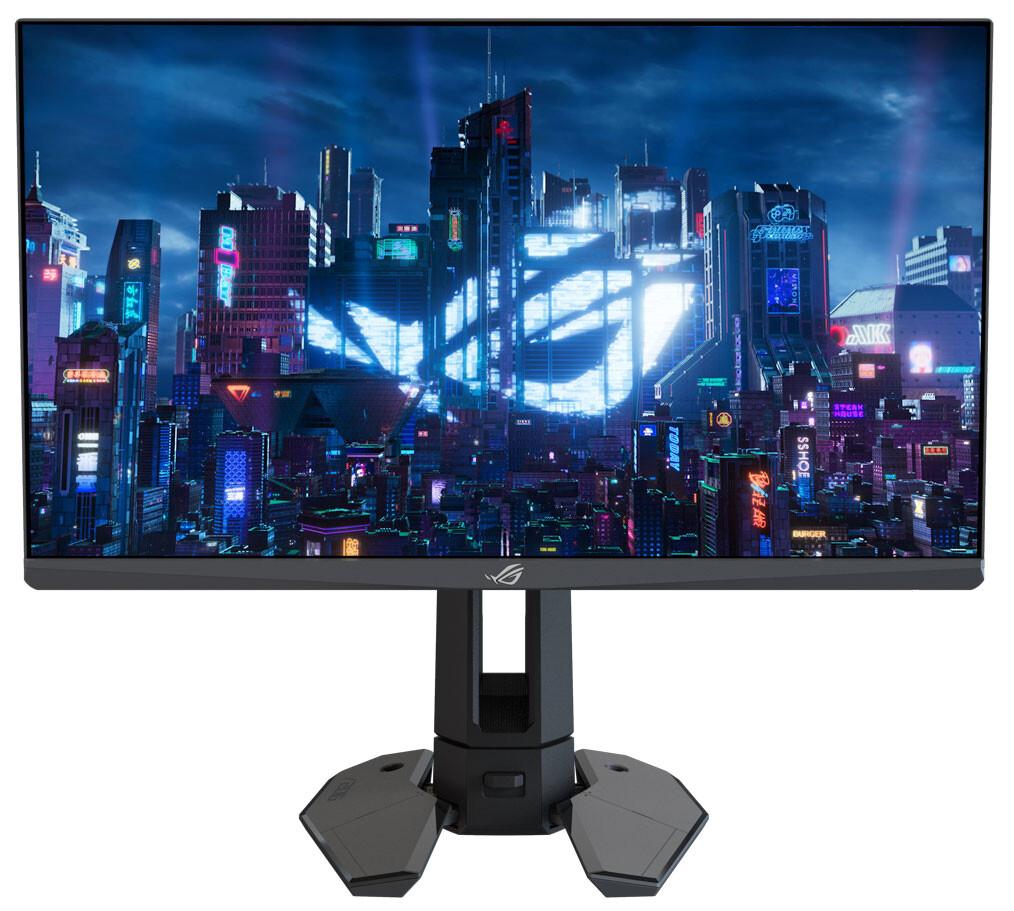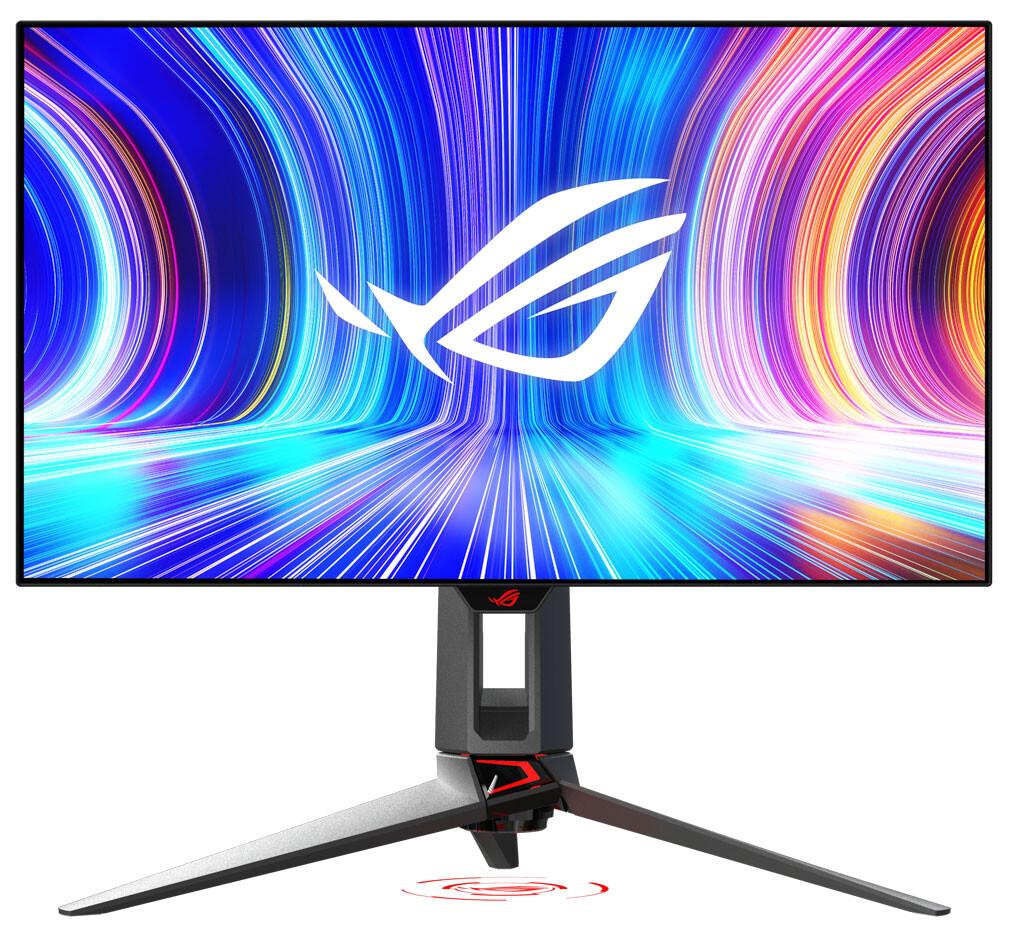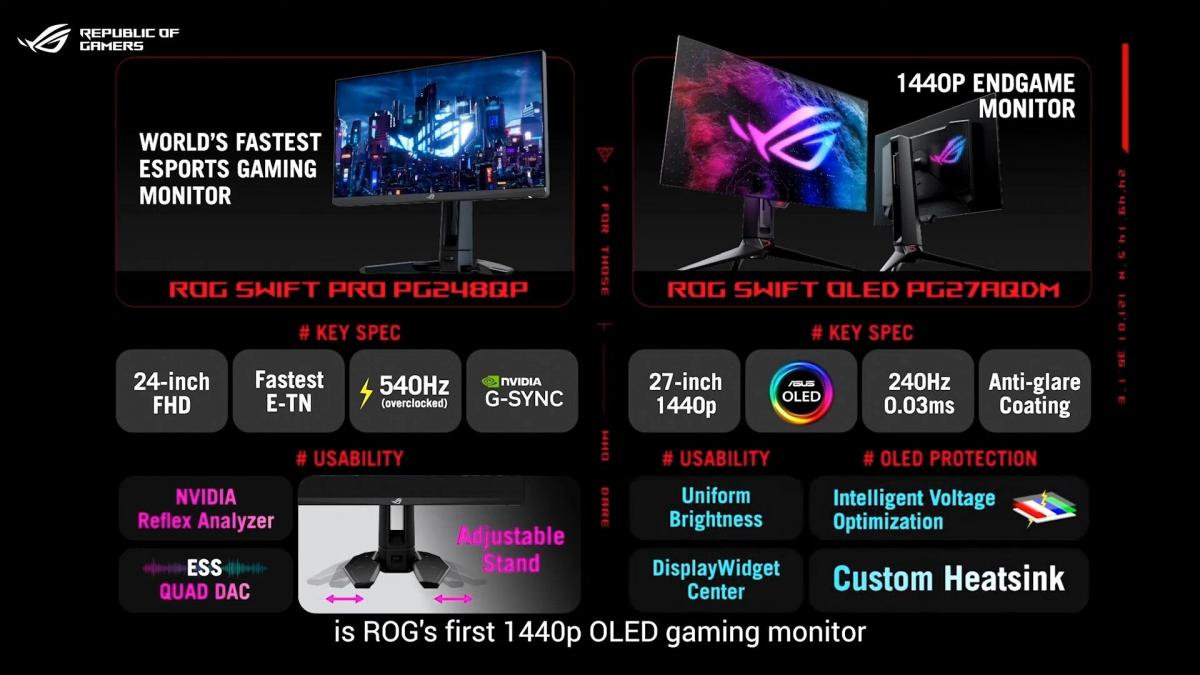The ROG Swift OLED PG27AQDM is the first ROG 1440p OLED gaming monitor with a superfast 240 Hz refresh rate and 0.03 ms response time. It comes with an anti-glare micro-texture coating to reduce reflections for a better viewing experience in all lighting conditions, and it offers 1,000 nits peak brightness.
The thermal design of the cooling system has been greatly improved to help reduce burn-in. It has a custom heatsink and a new internal layout to improve cooling. Internal airflow has been optimized and the top air vents are larger for improved heat dissipation. Heat is dissipated more evenly across the rear of the monitor. The average temperature is 5% lower compared to other 27-inch OLED gaming monitors. Intelligent voltage optimization ensures consistent luminance for each pixel by controlling the amount of voltage applied to it. ROG worked closely with the panel maker to determine the correlation between OLED brightness, voltage level, and operational temperature. A smart algorithm coded for the panel optimizes voltage based on temperature changes to ensure consistent brightness across the panel.
The ROG Swift OLED PG27AQDM also comes with Uniform Brightness, which keeps the illuminance level even when white windows change dramatically. Plus, new DisplayWidget Center software makes it easy to use a mouse to change system functions and OLED settings via an intuitive interface.
The ROG Swift Pro PG248QP is the world's first 540 Hz gaming monitor. We reached this performance milestone thanks to the new esports TN (E-TN) technology, which offers 60% faster response times than standard TN panels, enabling superfast refresh rates and astounding clarity. It features a new stand design with retractable and locked claws to create a much smaller base footprint to free up more desktop space for pro gamers.
The 24.1-inch FHD (1920 x 1080) monitor with ultrafast 540 Hz (OC) refresh rate is designed for professional gamers and immersive gameplay. The G-SYNC processor includes a built-in NVIDIA Reflex Analyzer that captures end-to-end system latency to deliver the very best gaming experience. Additionally, the built-in ESS DAC provides surround sound, as well as gunshot and footstep enhancements that provide near-zero audio latency.




